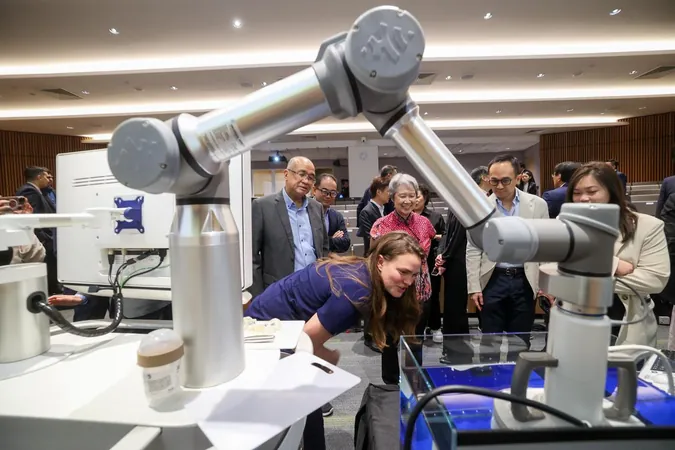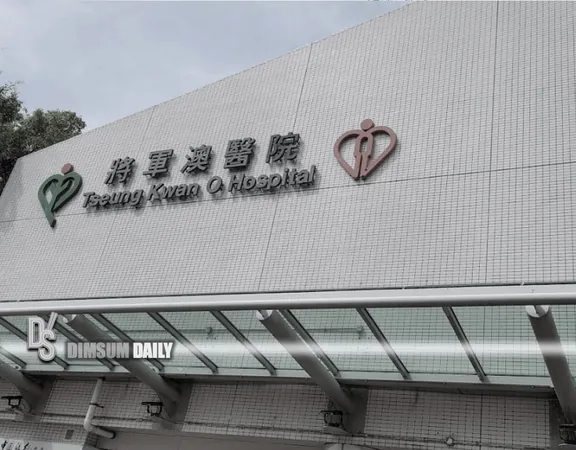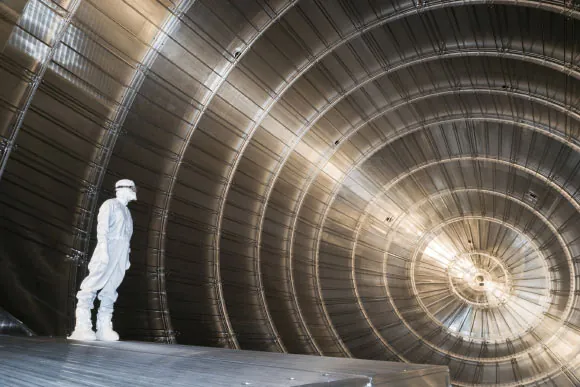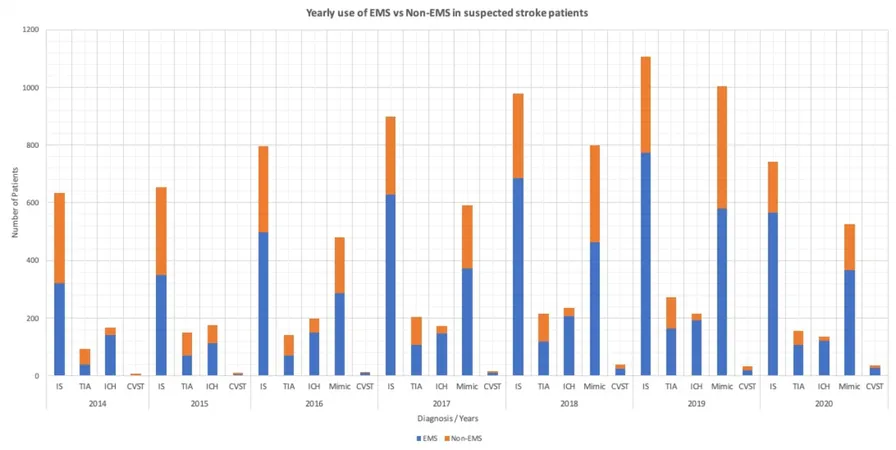
Revolutionary Cancer Treatment with Ultrasound and Bubbles Set to Launch in Singapore
2025-04-03
Author: Nur
Revolutionary Cancer Treatment with Ultrasound and Bubbles Set to Launch in Singapore
In an exciting development for cancer treatment, Singapore is gearing up to trial a groundbreaking therapy that utilizes ultrasound and microbubbles to target and destroy tumor cells. Set to begin in the latter half of 2025, this innovative treatment, known as histotripsy, offers a non-invasive alternative to traditional cancer therapies.
The beauty of histotripsy lies in its method: it operates without incisions, radiation, or the risks associated with surgical procedures, and it avoids damaging surrounding healthy tissues. Approved by the U.S. Food and Drug Administration (FDA) for treating liver tumors in October 2023, histotripsy has already seen success in Hong Kong, where approximately 50 patients have undergone treatment.
Singapore's trial will feature two state-of-the-art histotripsy machines, generously donated by the Li Ka Shing Foundation and Temasek Trust. One machine will be housed at the National Cancer Centre Singapore (NCCS), while the other will be located at the National University Cancer Institute, Singapore (NCIS). Both organizations have pledged a total of $12 million to facilitate the clinical trials, as confirmed in a recent joint press statement.
The initial focus of the trials will be on patients with liver cancer, but there are plans to expand the research to include treatments for kidney and pancreatic cancers, as highlighted by Ms. Ho Ching, chairman of Temasek Trust. The pioneering billionaire Li Ka Shing has expressed his enthusiasm for the potential of this treatment, voicing his support during the launch event.
Led by Professor Brian Goh, who heads the department of hepatopancreatobiliary and transplant surgery at Singapore General Hospital and NCCS, the trial will first involve 40 patients with liver cancer who are unsuitable for existing treatments. This cohort primarily includes patients with late-stage liver cancer and those with persistent tumors not responding to other therapies.
Current options for liver cancer treatment, such as surgery and local ablative therapies, can be invasive and unsuitable for patients with comorbidities or poor health. In contrast, histotripsy is a one-time procedure, akin to existing ablative treatments, but it utilizes mechanical energy rather than thermal energy, minimizing potential side effects and recovery complications, according to Professor Goh.
During the trial, patients with tumor sizes up to 3 cm will be prioritized, mirroring criteria from a previous histotripsy study in the U.S. known as the Hope4Liver trial. After completing the liver cancer assessments, the research team aims to expand the trials to address kidney and pancreatic cancer patients.
So, how does histotripsy work? The treatment derives its name from Greek roots meaning "soft tissue" (histo) and "mechanical breakdown" (tripsy). The procedure involves a device that precisely targets cancerous tissues, utilizing ultrasound-generated microbubbles. These bubbles rapidly expand and collapse, creating a force that liquefies the tumor and kills the cancer cells. Remarkably, the entire process lasts about four minutes, and patients often leave the clinic baffled, experiencing no immediate pain and able to return home on the same day.
The first trial for liver cancer using histotripsy began in 2019, and subsequent multi-center studies have led to the FDA's approval. More than 1,000 patients in the U.S. have since benefitted from the treatment, and researchers are currently exploring its potential applications in treating additional types of cancer, as detailed by Professor Xu, one of the treatment's co-inventors.
Recent studies suggest that histotripsy may not only destroy targeted tumors but might also activate the immune system to attack nearby, untreated cancerous lesions, a phenomenon that Singapore researchers plan to investigate further.
While histotripsy shows immense promise—displaying a low complication rate of around 6.8% according to U.S. studies—it is important to note that this treatment will not straightforwardly replace existing therapies for liver cancer and is not suitable for patients with widespread disease or systemic cancer.
Experts agree that while the initial results are promising, thorough, long-term data on safety and efficacy is essential. Singapore is on the cusp of an exciting new chapter in cancer treatment—one that could change the lives of countless patients. Stay tuned for more updates on this transformative journey in medical science and the potential future of cancer therapies!






 Brasil (PT)
Brasil (PT)
 Canada (EN)
Canada (EN)
 Chile (ES)
Chile (ES)
 Česko (CS)
Česko (CS)
 대한민국 (KO)
대한민국 (KO)
 España (ES)
España (ES)
 France (FR)
France (FR)
 Hong Kong (EN)
Hong Kong (EN)
 Italia (IT)
Italia (IT)
 日本 (JA)
日本 (JA)
 Magyarország (HU)
Magyarország (HU)
 Norge (NO)
Norge (NO)
 Polska (PL)
Polska (PL)
 Schweiz (DE)
Schweiz (DE)
 Singapore (EN)
Singapore (EN)
 Sverige (SV)
Sverige (SV)
 Suomi (FI)
Suomi (FI)
 Türkiye (TR)
Türkiye (TR)
 الإمارات العربية المتحدة (AR)
الإمارات العربية المتحدة (AR)